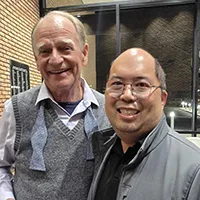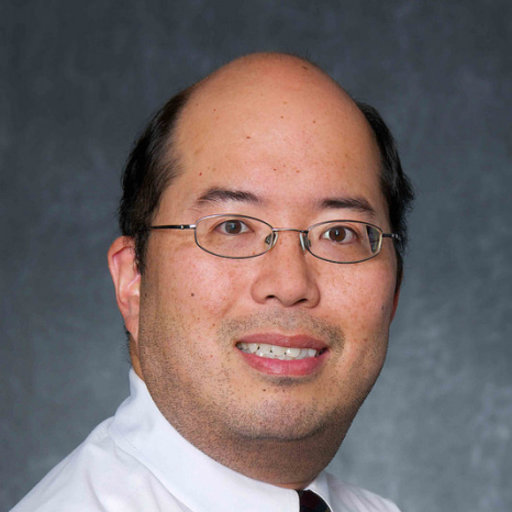Last Updated on November 12, 2024 by Laura Turner
This article focuses on reflective practices for health professional education and training. This advice can apply to developing a prehealth journal, personal blog, podcast, or other media-created story that may not involve physical paper, pen, or canvas.
“Writing in a diary is a really strange experience for someone like me. Not only because I’ve never written anything before, but also because it seems to me that later on neither I nor anyone else will be interested in the musings of a thirteen-year-old school girl.” – Anne Frank
“Writing” is a common challenge for students at all levels of education. While most are accustomed to standard assignment writing, such as the “five-paragraph high school essay” (The Complete Guide to Writing a High School Essay), college writing offers opportunities to write analytically, persuasively, or creatively. In contrast, application writing is stressful, with high-stakes reflective essays for admission or scholarship consideration requiring different constraints for character/word limits, prompts, and deadlines.
As we pointed out in our recent genAI survey article, most people use genAI tools for writing assistance, and many are concerned about ensuring future professionals (and adults) have critical thinking and communication skills that don’t rely on other tools. When everyone emotionally reacts to marketing messages through their daily social media outlets (Statistica.com), the self-reflection needed to build a unique voice or perspective becomes underutilized.
For years, many advisors have promoted journaling (Indiana University, Princeton University) as a way to help future professionals discern their purpose. Many health professional associations encourage journaling as a professional practice to explore empathy and compassion (see references), and many programs incorporate journaling to build a portfolio documenting significant and impactful professional experiences that can complement a resume or CV for future job applications. For example, pharmacy students are asked to submit reflections after completing their Advanced Pharmacy Practice Experiences (University of New Mexico pharmacy student at Tsehootsooi Medical Center by Lia Jasperse, Pfizer Industry Elective by Isabella Chow and Isabella Lim of St. John’s University College of Pharmacy and Health Sciences).
In its Continuous Professional Development Guide, the General Optical Council (UK) defines reflective practice as “…the process where you think about your experiences to gain insights about your practice and improve how you work or the care you give to your patients. Reflection is part of the continuous learning and development expected of you as a professional throughout your career.” (Template)
Beginning Your Habit
While you can find many apps to help jumpstart your journaling habit, the first step can be difficult. Without dwelling on creating habits in this article, I encourage you to rely on your goal-setting and self-motivation to make this habit go from an intentional task to a routine. Develop a training plan to make reflection writing an additional strength that builds upon your communication competencies.
That said, a blank page is intimidating without a plan or a model. You likely already enjoy many influencers’ videos describing their typical school or work day, even taking over some “official” social media accounts. Describe your day in a letter to your favorite family member or cherished elder. Use a speech-to-text transcribing program (on your smartphone) to record your thoughts, even throughout the day.
“It’s wonderful to be observant and not know anything. You can wake up each day as an empty vessel, ready to be filled with the knowledge of the day.” Livingston Taylor (LT Takeaway 4, April 19, 2018, as shared on Facebook).
How does one get inspiration for writing?
My source of inspiration comes from my local spiritual/faith leaders and their process of drafting weekly sermons or homilies (backstorypreaching.com blog). In many ways, the sources of writer’s block for prehealth applications are similar, especially the quest for the “perfect insight.” Start with a modest schedule of writing one reflection every week; this includes any career-seeking high school/community college/freshman students.
Many people suggest letting your subconscious work for you by taking breaks from the keyboard. Go for a walk or read a “fun” book. Others start with short ideas (bullet points or sticky notes) to connect to a common theme. Here are some strategies to stimulate your writing:
- Write a one-sentence affirmation or explore a “quote of the day.”
- React to a news event, an opinion column, or a situation you must process (MindJournal blog).
- Look at past essay or interview prompts. Write different answers for the same question.
- Don’t stress; keep the stakes low (Journaling Prompts For Mental Health).
- One can keep many types of journals, so mix it up.
- Consider your senses (54321 Grounding Exercise), and write about what you see, touch, hear, smell, or taste.
SDN Resources for Application Essays
What do your peers write about?
Most prehealth advisees typically reflect on their clinical or community service experience (see my 2023 interview with Accepted.com). In addition to keeping track of experience hours, one should find meaningful insights that reveal preprofessional competencies.
Reading others’ reflections can also inspire you to find a connection to your desired career goal or personal vision. On my bookshelf is The Soul of a Doctor, a collection of essays from third-year medical students at Harvard. Prehealth students can submit reflection essays to the Narrative Prehealth Journal (a non-profit group) or the Student Doctor Network. Pager Publications, another non-profit organization, publishes other health professional student narrative publications.
Blogs are also great resources for discovering topics that are important to you. Many of my advisees enjoyed sharing their thoughts with a small, accountable, supportive group of readers or listeners through a defined private WordPress/GroupChat/Discord. One does not need to monetize thoughts about a new restaurant, outfit, or vacation spot (though I cannot blame anyone who does).
Reflection Prompts
Having a defined question to answer makes reflection easier. More reflection prompts can be found in Finding Your Purpose as a Health Professional.
What makes a good reflection?
While the habit of writing should be nurtured without self-censorship, well-written reflection papers that are part of the learning process require discipline and vulnerability to face uncertainty or embarrassment (Emote Control article).
Performing arts faculty often require students to develop critical thinking and analysis skills to interpret a script or artistic work or develop a character. Students usually document their process through a journal, with entries evaluated by faculty. Most faculty want to see the students inquire deeply about the situations, characters, and actions captured in a scene or artwork beyond just a description. Faculty want to see if students can identify areas of tension or conflict, apparent “defects,” or emotional stimuli that enhance audience interest and engagement.
Similarly, medical and dental schools have also begun to involve reflection and humanities-based assignments within their curricula (Bramstedt 2016, Chang 2020, Savitha et al. 2021, Zahra and Dunton 2017). Perelman University of Pennsylvania, Harvard University, University of Iowa, Goldman Boston University, and Kansas City University College of Osteopathic Medicine offer resources and curricula to help students hone their observation and reflection skills through response to visual arts. Furthermore, some schools found self-reflection to help foster better student wellness and culture (University of Rochester and AAMC).
Effective personal reflections will have a theme that resonates with their audience. In the 2024 essay collection The Perfect Doctor: Forty Voices on the Imperfect Pursuit of an Ideal, I joined other essay authors to tap into personal stories about the pressure to be “perfect” during premedical and medical training, especially when navigating the fear of being disciplined for being less than perfect in all phases of life. Each account allows readers to consider similar situations they experienced, possible alternative ways to resolve the conflicts, and inspire philosophical questions about how trainees are rewarded or punished. Each essay also has reflection prompts.
Interprofessional support of portfolios and narrative reflection
- Reflective practice in medicine: The hidden curriculum challenge – Ní Mhurchú – 2024 – The Clinical Teacher – Wiley Online Library
- Exploring Students’ Views of Portfolio Assignments to Foster Self-reflection in Preclinical Dental Education | JCDA
- Opportunities for narrative medicine in dental education and practice, a narrative review
- Practising reflection in pharmacy – The Pharmaceutical Journal
- Tip of the Week: Reflection Improves Pharmacy Effectiveness
- Reflective Practice and Its Implications for Pharmacy Education
- Keeping a reflective learning portfolio – College of Optometrists (Reflective learning portfolio template)
- Five-minute reflection (Royal Academy of Podiatry)
- Reflective Practice in Physical Therapy: A Scoping Review
- Fostering Reflective Practice: Self-Assessment Abilities of Physical Therapy Students and Entry-Level Graduates
- Journaling Improves Medical Students’ Study Habits, Physical and Mental Health | American Physiological Society
Journaling for Wellness
- 11 Life-Changing Journaling Tips For Beginners – Simply + Fiercely
- Journaling for Emotional Wellness – Health Encyclopedia – University of Rochester Medical Center. Accessed September 26, 2024.
- How to journal for mental health: 7 tips to get started — Calm Blog
- Learn to Journal: Tips and Ideas
- An Ideal Bullet journal for Pre-Medical students. by pimmada boonma on Prezi
Find accountability partners
When you work out with a friend or a few, you generally stay on schedule compared to working out alone. Having accountability partners can enrich the creative process. The diversity of perspectives and ideas can spark new themes to reflect upon. Partners can also provide initial feedback about how your narrative is revealed (is it too long or too short?). Seek partners with professional societies like the American Medical Women’s Association and give yourself a chance to submit an essay or artwork. Joining writing campaigns (Write Out) or attending conferences focused on medical humanities and writing (Writers Conference for Healthcare Professionals | SoMeDocs: Doctors on Social Media) may also help you find colleagues who can help you.
Grow comfortable with writing about your journey; it doesn’t need to be related to medicine. While you might not be ready to write a novel, finding the words to find your moral compass and anchoring values will let others appreciate you as a future community member and empathetic healthcare professional.
References Cited
Bramstedt, Katrina A. (2016 August). The Use of Visual Arts as a Window to Diagnosing Medical Pathologies. AMA Journal of Ethics. 2016;18(8):843-854.
Chang, Howard. (2020, September 10). Honoring the Personal Response: Experiencing Art Museum-Based Learning in Medical Education. Biomedical Odyssey: Life at the Johns Hopkins School of Medicine website. Accessed September 27, 2024.
Savitha D, Anto T., and TV Seiji. (2021 April 7). Introducing reflective narrative for first-year medical students to promote empathy as an integral part of physiology curriculum. Advances in Physiology Education. https://doi.org/ADV-00206-2020
Schon DA. (1992). The reflective practitioner: How professionals think in action. Routledge. https://doi.org/10.4324/9781315237473
Zahra, F. S., & Dunton, K. (2017). Learning to look from different perspectives – what can dental undergraduates learn from an arts and humanities-based teaching approach? British Dental Journal, 222(3), 147-150.



